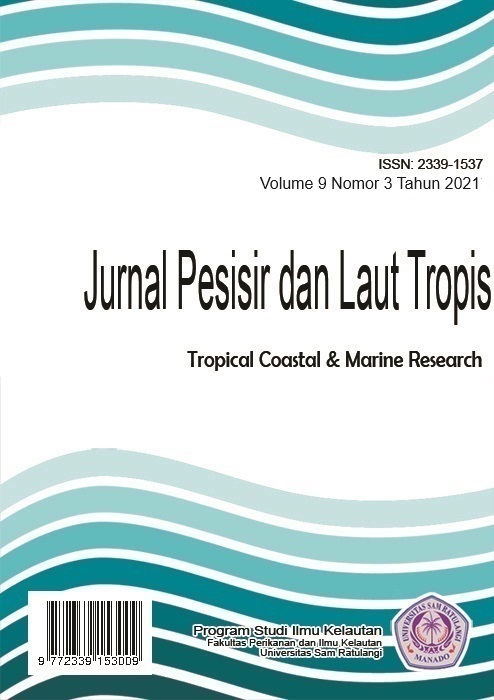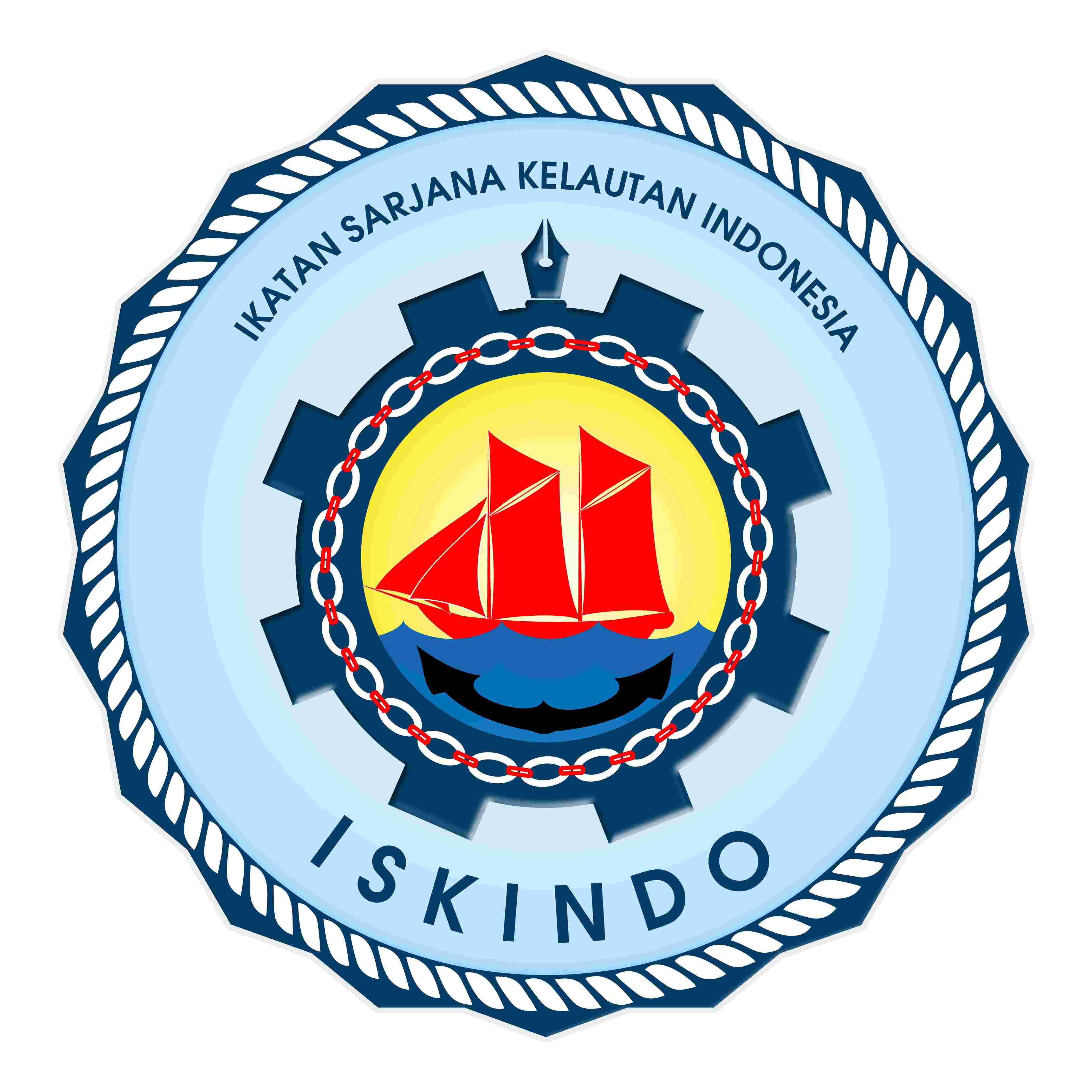STRUKTUR KOMUNITAS IKAN TARGET DI EKOSISTEM TERUMBU KARANG PADA ZONA TRADISIONAL PULAU BUNAKEN, TAMAN NASIONAL BNAKEN
DOI:
https://doi.org/10.35800/jplt.9.3.2021.36713Abstract
This study aims to determine the structure of the target fish community, including species composition, type of research and to analyze the ecological index in which the diversity index, uniformity index, dominance index, and community similarity index. Data collection was carried out in coral reef ecosystems in the traditional zones of Madolin, Alung Banua, Sachiko, Muka Kampung, and East Bunaken areas, all data collection areas were included in the Bunaken National Park area. Data was taken using the Underwater Visual Census method, also equipped with a documentation search for underwater photography and videography carried out at the Marine Biology laboratory, Faculty of Fisheries and Marine Sciences, UNSRAT. There are 3 families, 21 species and 130 individuals at the Madolin area, 5 families, 24 species, and 72 individuals at the Alung Banua area, 5 families, 23 species, and 77 individuals at the Sachiko area, 2 families, 11 species and 129 individuals at the Sachiko area. Muka Kampung, and 4 families, 18 species, and 160 individuals at the East Bunaken location. The calculated ecological index values obtained are H' 2.11 (Madolin), 2.90 (Alung Banua), 2.65 (Sachiko), 1.57 (Muka Kampung), 1.67 (East Bunaken) indicating the ecological condition of the ecosystem. coral reefs are still stable even though diversity is classified as moderate but inversely proportional to low dominance ranging from 0.07 to 0.33 on average. The results of the community similarity analysis using the Sorense index (<50%) showed that there was no similarity in reef fish communities between the 4 stations, namely (Madolin & Alung Banua), (Madolin & Muka Kampung), and (Muka Kampung & East Bunaken).
 Keywords : target fish community, diversity, dominance, community similarity
Â
















